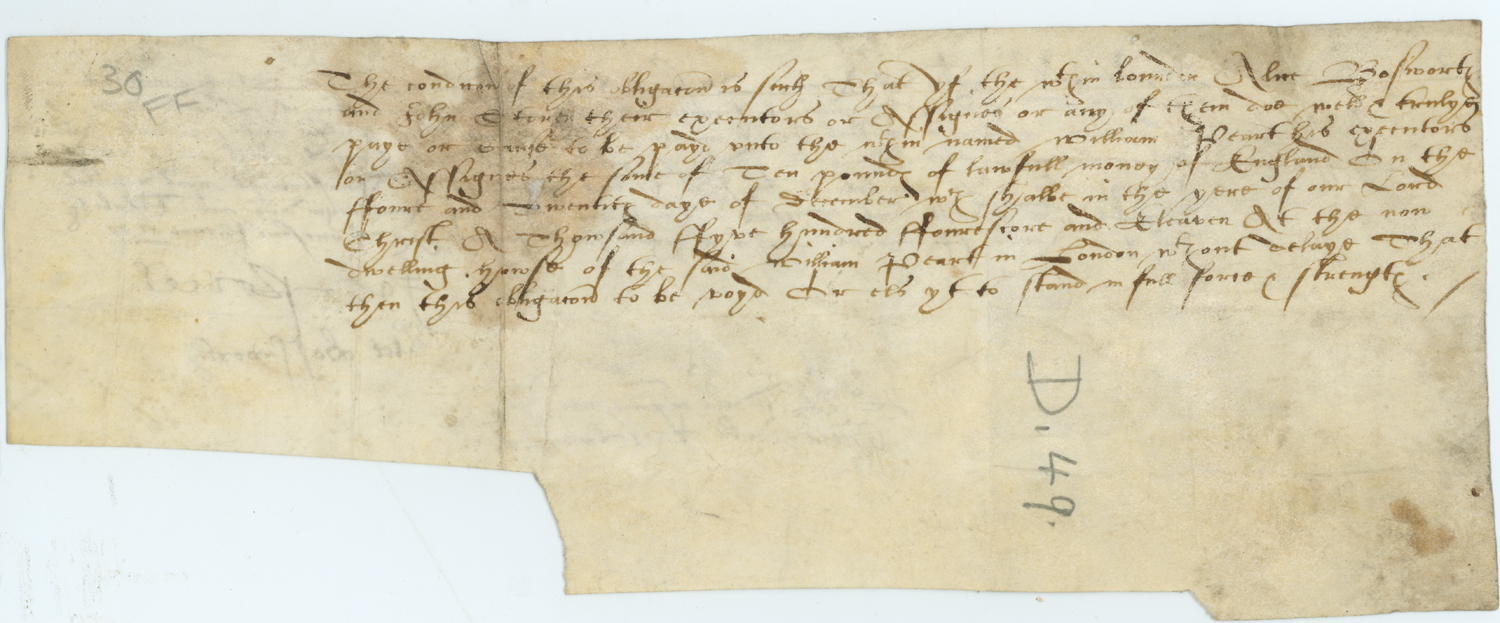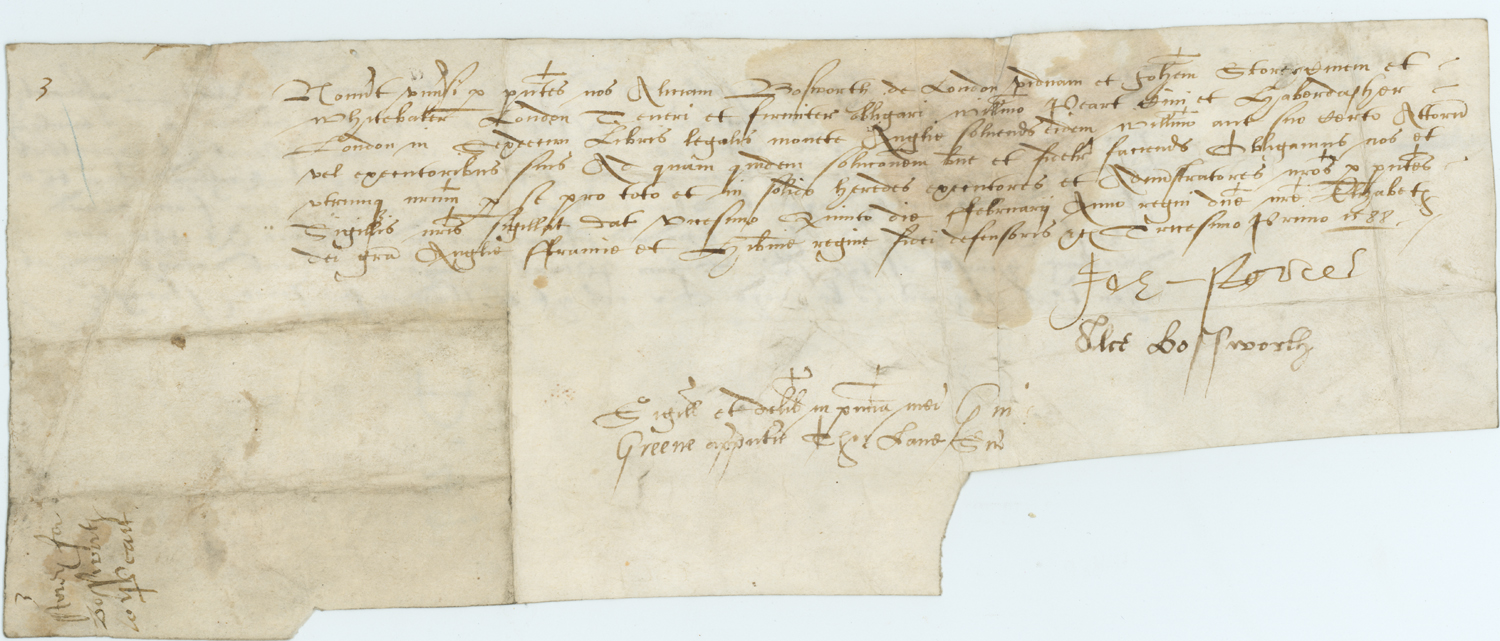Following on from the last post regarding repairs to integral seal tags, this post concerns improvements to the design of the integral seal tag in order to make them stronger and less likely to break. I'll discuss some examples of minor changes I believe are attempts to improve the strength and resilience of integral seal tag below.
Before I do, it's probably worth reiterating just why it was so important for the seal to stay attached to the document. The seal while attached to the document was proof that the document was genuine and not a forgery. It was near impossible to put a seal onto a new document (period forgeries mainly go to the extreme effort of duplicating the seal die), so a document with a seal still attached in it's original manner held great weight. Think about receiving a modern legal document - if you received a copy with the signatures blanked out, could you ever be sure it was the genuine article?
As this post was rather long, I've divided this into two sections, this section is chiefly English examples, the next Swedish.
increased tag width
The earliest integral seal tags use quite thin seal tags, of equal thickness with the wrapping ties. While thin wrapping ties make sense as they are easier to tie, thin seal tags makes them easier to snap. If you look at the progression of 11th C broken integral seal tags, you will notice that in general the seal tags become thicker, but the ties remain thin, such that many of the examples by the end of the century have seal tags about 3-4 times thicker than the wrapping ties. I believe this is a gradual change to strengthen the seal tag. Of course it wasn't a universal change, just a gradual trend that more and more scribes knew about and used most of the time.
Below is two examples, one of this tags from the start of the century, and one of the thicker tags near the end.
Writ of Edward  the Confessor
the Confessor
c. 8 September, 1062
Manuscript: In old English
Seal & Seal tag: no longer remains
Wrapping: Wrapping tie no longer remains.
(B.M. Add Ch. 19802) Writ regarding Christ Church Canterbury
Writ regarding Christ Church Canterbury
1089-93
Tag & Wrapping: seal missing, but seal tag and tie remain
(Canterbury D & C Library Ch. Ant. A. 48)
shorter tags
We've already seen a lot of the short stubby 16th C English tags, and I briefly mentioned the shorter length of the tags compared to earlier ones. I believe these shorter cuts - only halfway across the page, for the seal tag, should put the point of stress in the middle of the page and have less long tag to be broken. See in the example below that the wrapping tag cut is most of the way across the page, so the shorter cut on the seal tag is clearly deliberate.
 Bond by Alice Bosworth and John Storey, white-baker of London, to William Peart, haberdasher of London, for debt
Bond by Alice Bosworth and John Storey, white-baker of London, to William Peart, haberdasher of London, for debt
London, 1588
Tags: both seal tag ands wrapping tie have torn off
(McMaster University British Legal Instruments Collection No. 30)
Not only 16th C English tags show shorter tags, 14th Century Swedish integral seal tags are only cut approximately 2/3 of the way across the page, as in the example below. Probably other examples exists, but I haven't found many examples of integral tags from the periods between yet.
Sweden, 1374-5
(Swedish National Archives DS8842)
I believe another reason for not seeing this type of tag in the 11th C examples is that the shorter tag might not work very well with a larger heavier seal. A heavier seal would probably pull the velum into more contorted shapes, and there would be less length for the tag to equalise stresses over. I think, maybe?
folded parchment Charter of Henry I
Charter of Henry I
1109
(Durham Cathedral Manuscripts, 2.1.Reg.5)
The seal tag on this document has been folded over, presumably to provide double reinforcement of the tag where it passes through the seal. Note the writing on the top of the tag- probably the name of the person whose seal is attached. The seal tag below the seal should continue for the width of the page - it has been broken off. One possible disadvantage of this folded version is that it wasn't easy to use a wrapping tie - perhaps a reason why it isn't seen commonly?
More in part II.......
Saturday, 7 August 2010
Attempts to strengthen integral seal tags I
comming live to you at
6:30 pm
Labels: seal tag
Subscribe to:
Post Comments (Atom)


No comments:
Post a Comment